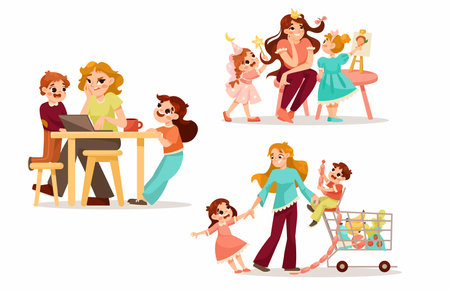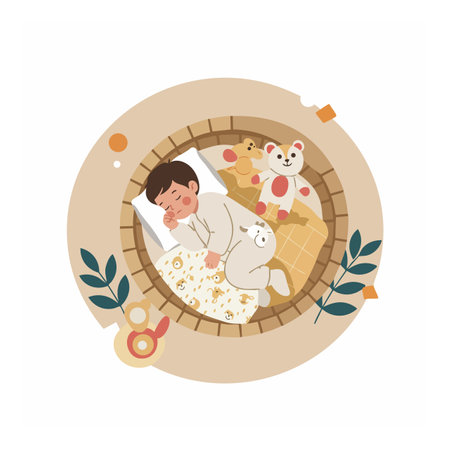The Importance of Baby-Proofing Stairs in British Homes
As a new dad living in the UK, I quickly realised that British houses come with their own unique set of baby-proofing challenges—especially when it comes to staircases and banisters. Our homes often have steep, narrow stairs and tight corridors that aren’t exactly pram-friendly or toddler-safe. I remember the first time my little one started crawling with real intent; suddenly, those charming Victorian stairs that I once loved became an obstacle course of hazards. It’s easy to underestimate just how risky these features can be until you spot your baby making a determined beeline for the stairs while you’re distracted by the kettle boiling.
What makes UK homes particularly tricky is the age and layout of many properties. Unlike newer builds elsewhere, we often have carpeted steps with awkward turns, ornate (but wide-gapped) banisters, and landings that seem tiny when you’re trying to manoeuvre a safety gate. The combination of steepness and narrow passageways means there’s very little room for error—one wrong move could lead to a nasty tumble. To illustrate some common hazards found in typical British homes, here’s a quick comparison:
| Feature | Common Hazard | Why It Matters |
|---|---|---|
| Steep Staircases | Increased fall risk | Babies can pick up speed quickly on steeper steps |
| Narrow Corridors | Limited space for gates/barriers | Makes installing safety solutions more challenging |
| Wide Banister Gaps | Risk of head/limb entrapment | Little ones can squeeze through or get stuck |
| Tight Landings | No buffer zone at top/bottom of stairs | Less reaction time if a child gets too close to the edge |
If you’ve ever worried about your little explorer heading straight for those stairs, you’re definitely not alone. In my experience, addressing these hazards early is crucial—not just for peace of mind but for your child’s safety as they start to roam more freely around your home.
2. Types of Baby Gates and Safety Solutions
If you’re a parent in the UK, chances are you’ve spent a fair bit of time staring at your staircase, wondering how on earth to keep your little explorer safe. Baby gates are one of the first things most new mums and dads think about when baby-proofing, but with all the different types out there, it’s easy to feel overwhelmed—especially if you live in an older Victorian terrace or one of those modern new builds with wider staircases and sleek banisters. Here’s a quick overview of the main types of baby gates and safety solutions popular in British homes:
| Type | How It Works | Best For | Things To Watch Out For |
|---|---|---|---|
| Pressure-fit Gates | No screws required; held in place by tension between two walls or bannisters. | Rental properties, temporary use, or where you don’t want marks on woodwork. | Can become loose over time, not recommended for top of stairs unless specified as safe for this use. |
| Screw-fit Gates | Permanently fixed to the wall or bannister with screws and brackets. | Top or bottom of stairs, especially where absolute security is needed (e.g., energetic toddlers). | Requires drilling into surfaces—might not suit period features or listed buildings without permission. |
| Retractable Gates | Mesh barrier pulls across opening and locks into place; rolls back when not in use. | Narrow spaces, awkward layouts, or when you want something less visually intrusive. | May not be as robust as metal gates for determined climbers. |
| Banister Adaptors & Y-Spindles | Kits and adaptors to help fit gates securely to round or square banisters without drilling. | Victorian terraces with ornate wooden banisters or new builds with glass/metal spindles. | Check compatibility carefully; some adaptors only work with certain brands of gate. |
I’ve personally tried both pressure-fit and screw-fit styles in our old London terrace and found that while pressure-fit is great for downstairs (and means no grumpy landlord calls), screw-fit gave me real peace of mind at the top landing. Every house is different: Victorian terraces often have narrow, winding stairs and chunky bannisters, so measure up before buying. Modern homes might need wider gates or special fittings for glass panels—always double-check width and fitting requirements! And trust me, after a few midnight nappy changes, you’ll be grateful for a gate that’s easy to open with one hand but impossible for tiny fingers to fiddle with.

3. Securing Banisters and Railings: Practical Tips
When it comes to baby-proofing staircases in UK homes, one of the trickiest bits is those classic banisters with their wide gaps and decorative spindles. As a new dad myself, I was genuinely surprised at how quickly my little one’s curiosity brought her straight to those inviting gaps! British houses often have open or ornamental bannisters—lovely to look at, but a real headache for baby safety. Here are some hands-on solutions that worked for us:
Mind the Gap: Reducing Spacing Between Spindles
| Solution | Description | Where to Buy/DIY Tips |
|---|---|---|
| Banister Safety Mesh | Flexible mesh that ties or velcros around spindles, blocking gaps without damaging woodwork. | B&Q, Argos, or Amazon; easy to cut and fit yourself. |
| Plexiglass Panels | Clear sheets fixed to the inside of the banister, keeping things stylish but safe. | Your local DIY store can cut to size; attach with cable ties or discreet brackets. |
| Cot Bumpers/Soft Barriers | Repurpose cot bumpers or padded barriers as a temporary fix for rental properties. | Secure with zip ties; check daily for wear and tear. |
Covering Decorative Gaps and Preventing Climbing Temptations
If your bannisters have those gorgeous Victorian scrolls or modern geometric cut-outs, babies see them as climbing frames! I found that:
- Install Perspex Sheets: These work brilliantly on both old and new railings. They’re almost invisible but make it impossible for little fingers (and feet) to find a grip.
- Avoid Placing Furniture Nearby: It’s tempting to pop a chair or toy box near the stairs, but that only gives babies a leg-up. Keep landing areas clear!
- Cable Tie Solutions: For quick fixes (like when visiting the grandparents), use cable ties and a lightweight fabric barrier to block access. Just snip off when you leave—no permanent marks.
Quick Comparison: Covering Options for British Bannisters
| Option | Pros | Cons |
|---|---|---|
| Plexiglass/Perspex Sheet | Discreet, strong, long-lasting | Needs accurate measurement and installation time |
| Safety Mesh Netting | Easy to fit/remove, affordable | Might not suit period-style interiors |
| Padded Barriers/Fabric Covers | No tools needed, good for rentals/travel | Can look bulky, needs regular checking/tightening |
A Dad’s Tip:
I’d recommend getting down at baby-level and having a crawl about—you’ll spot gaps and footholds you’d never notice from adult height! And whatever solution you go for, check it regularly; as our daughter grew more adventurous, we found we had to adjust things every couple of months. Next up: let’s tackle securing the top and bottom of those stairs…
4. How to Install Safety Devices in Older British Properties
When it comes to baby-proofing staircases and banisters in period homes here in the UK, things can get a little bit tricky—trust me, I learned this the hard way. Our Victorian terrace has all those charming features: ornate skirting boards, uneven floors, and some very oddly shaped bannisters. While these quirks add character, they also made fitting safety gates and other gear a proper challenge.
First off, not all baby gates are created equal. Many of the standard pressure-fit models just don’t work when your walls bow out or your skirting board sticks out an inch further than your banister. I ended up spending ages measuring gaps and scratching my head before I found a workaround. Here’s what I picked up from my experience:
| Feature | Modern Homes | Older British Properties | My Solution |
|---|---|---|---|
| Straight Walls & Banisters | Usually present | Rarely straight or level! | Use adjustable wall cups & custom spacers (bit of DIY) |
| Standard Skirting Boards | Flush with wall | Deep & decorative skirting | Mount gate above skirting or use longer screws |
| Banister Shape | Square/rectangular posts | Round, carved, or oddly angled | Cable ties or universal Y-shaped adapters work best |
| Floor Levels | Even floors throughout | Uneven/creaky floors, steps at weird places | Add non-slip pads; check for trip hazards every time! |
If you’re living in an older property, my top tip is to avoid drilling into any original woodwork unless you really have to. Instead, look for “no-drill” options or clever fittings that clamp securely onto awkward shapes without damaging the finish (your future self will thank you when you move out or decide to redecorate). When nothing seemed to fit our bottom stair post, I actually used a combination of padded cable ties and a wooden block—nothing fancy, but it held the gate firm without leaving a mark.
The biggest lesson? Be patient and ready to improvise! Each old house is unique, so sometimes it’s about mixing modern safety gear with a bit of classic British ingenuity. If you’re stuck, don’t hesitate to pop into your local hardware shop—chances are, the staff have seen every quirk under the sun and can help you find the right fix.
5. Top Mistakes to Avoid (From Firsthand Experience)
As a new dad navigating the baby-proofing maze in our UK home, I learned some lessons the hard way. Trust me, it’s all too easy to make mistakes when you’re juggling nappy changes and sleepless nights! Here’s an honest look at the pitfalls I faced—and how you can avoid them.
Choosing the Wrong Gate Type
The first time I shopped for stair gates, I just grabbed what was on offer at the local shop. Big mistake! Pressure-fit gates seemed convenient but didn’t sit flush against our uneven Victorian banisters—leaving dangerous gaps. A hardware-mounted gate would have been safer for tricky staircases. Here’s a quick comparison:
| Gate Type | Best For | Common Pitfalls |
|---|---|---|
| Pressure-Fit | Flat, sturdy surfaces; rental homes | Gaps on uneven stairs; less secure for top of stairs |
| Hardware-Mounted | Permanently fixing to walls/banisters; top of stairs | Requires drilling; not ideal for listed buildings |
Underestimating Baby’s Determination
I thought my little one wouldn’t notice the gate—or bother with it—but babies are clever and persistent! My son watched us open it a few times and then tried mimicking us. Make sure your chosen gate has a lock mechanism that’s genuinely childproof and always double-check it after closing.
Poor Banister Coverage
Initially, I only blocked off the stairs but left wide gaps between old spindles—big enough for tiny arms and legs. Babies find these irresistible! Installing clear banister guards or adding extra spindles is a must.
Ignoring Trip Hazards
I didn’t think much about the bottom bar of pressure-fit gates until I tripped (twice!). Always look for low-profile designs or paint/highlight bars to make them visible.
Quick Tips to Sidestep These Headaches:
- Measure twice before buying any gate—UK houses vary wildly in size and shape.
- If you’re in a period property, check with your landlord or council before drilling into banisters.
- Don’t rush—take your time fitting each solution securely.
A bit of prep goes a long way. Learn from my stumbles and you’ll have peace of mind—and fewer bruised shins!
6. Making Stairs Safe Without Sacrificing Style
As a new dad, I quickly learned that baby-proofing your staircase isn’t just about bolting on the first plastic gate you find at the shop. Especially in UK homes, where period features and charming banisters are part of the house’s soul, you want to keep that distinctive British style while making things safe for your little explorer. Here’s how we’ve managed to keep our hallway both secure and stylish, using some clever baby-proofing tricks inspired by local design sensibilities.
Blending Safety with British Elegance
The goal is to add safety without turning your home into a fortress. For example, we chose a wooden stair gate painted in Farrow & Ball shades to match our skirting boards—so it blends right in. If you have classic Victorian spindles, opt for transparent acrylic guards instead of bulky barriers; they’re nearly invisible and don’t ruin those lovely details. Below is a comparison of popular UK-inspired baby-proofing solutions for stairs and banisters:
| Solution | Safety Rating | Style Factor | Best For |
|---|---|---|---|
| Wooden Stair Gates (painted) | ★★★★★ | High – Customisable colours | Traditional or modern homes |
| Acrylic Banister Guards | ★★★★☆ | Very High – Discreet appearance | Period properties with ornate banisters |
| Wrought Iron Safety Rails | ★★★★★ | Medium – Matches heritage metalwork | Cottage or Georgian houses |
Smart Storage for Hallways
If your hall gets cluttered with shoes and bags, consider built-in storage benches with soft-close lids to avoid trapped fingers. This keeps the space tidy (and more grown-up looking), while also reducing trip hazards for babies taking their first wobbly steps.
Final Thoughts from a New Dad
I’ll admit, I was worried about baby-proofing ruining the charm of our old terrace. But with a bit of creativity—and a nod to classic British interiors—you really can have both style and safety on your stairs and landings. Take inspiration from local hardware shops or even country house tours; there’s always a clever way to keep your little one secure without losing that unique UK character.


